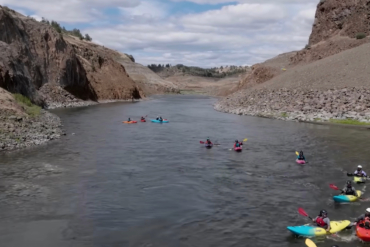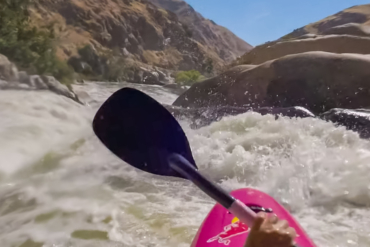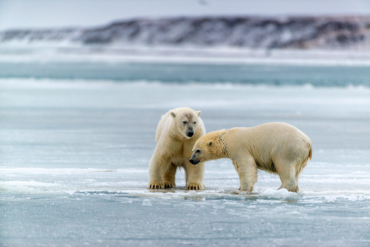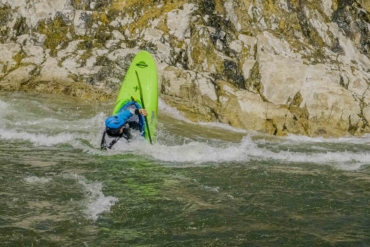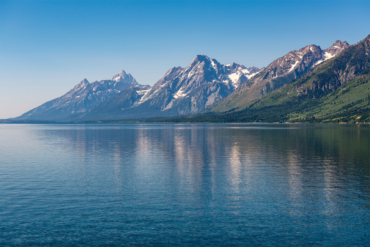Ben Stookesberry and a team of international kayakers were 300 miles into a first descent of a Colombian river when FARC rebels seized the group.

After kayaking 300 miles, Stookesberry saw a motorized boat on the river for the first time. A woman sat in the center, with two men on either end. At first he thought it was just a tourist cruise. But then the crew saw the kayakers and turned right toward them.
As the boat turned, Stookesberry saw the AK-47s. This was his first encounter with FARC (The Revolutionary Armed Forces of Colombia) — April 18, 2017. His team was 19 days into the expedition.
Colombia State Of Affairs
For 50 years, Colombia existed in a state of near civil war. During the conflict, FARC made money in many illegal ways — kidnapping, a common one. More than 27,023 people were abducted during the conflict.
To FARC, this was a means to an end. The rebel group saw itself fighting for the rights of the poor against what it deemed an oppressive government. The government sought to eradicate its camps. FARC stood for communism, widely opposed by many.
The conflict resulted in more than 218,000 casualties and 177,000 civilian deaths, many at the hands of FARC.
2016 Peace Accord Met
On November 13, 2016, FARC and Colombia’s Congress signed a peace accord after 52 years of conflict. It gave the rebels political legitimacy in the form of their own national party.
The country is enjoying a peaceful upswing. But under the surface, FARC still lurks in Colombia’s more remote regions.
The 700-mile Apaporis River is one such area. Stookesberry used the term “lawless” in describing the region, where he and Chris Korbulic, Jessie Rice, Jules Domine, and one other kayaker who chose to remain anonymous set off for a record-breaking attempt.
First Descent Of Apaporis River
The team launched on March 30. A remote corner of the world, this area in Colombia is known as one of the most roadless, too. Pushing off from a bridge, they would paddle for five full days into isolation before entering the Chiribiquete mountains.

Just after entering the mountains, they encountered a huge class-V rapids and vertical cliffs, hundreds of feet tall. At this point an upland portage was impossible and the team was committed to the voyage — the point of no return.
One day the team broke from kayaking to hike and scout. Half of the team high-pointed the tallest mountain in the nearby section of the Andes. The other half observed the next stretch of river.

While scouting, Stookesberry stumbled upon an abandoned FARC encampment. The team knew rebels were in the area, and this was a reminder. Protocols were in place if the team were to encounter FARC, with emergency contacts in a Colombian city and California aware of the possibility.
With FARC fresh on the team’s mind, the paddling continued. Stookesberry described the sense of isolation as gorgeous and pure.
The Apaporis is an exceptionally flat river, descending just 700 feet in 700 miles. Periodic waterfalls dot the river, accounting for most of the elevation drops. The days are long and arduous with the experience akin to paddling across a lake.
The First Village
Three-hundred miles into the river, the team encountered the first village. They met with the locals and even planned to participate in the school’s English class. A rare airstrip near the village provided a resupply.

Two doctors treating remote villages passed through and warned the kayakers of a known FARC checkpoint downstream.
They would paddle through the night, hoping to shoot past FARC without any interaction.
Encounter With FARC
All night and the next morning, the team paddled and thought they shot past the checkpoint. The team split off naturally, and Stookesberry and Rice kayaked behind the other three members of the team. Stookesberry slightly ahead of Rice.
In the afternoon of April 18th, the motor boat with members of the FARC approached Stookesberry.
He said the interaction was peaceful and that the FARC rebels did not point guns at the kayakers. Stookesberry said he remained as non-threatening, calm, and amicable as possible, and so did FARC.
The people in the motorboat described who they were. They asked Stookesberry who he was and what he planned to do. After the initial communication, FARC passed the information along to their superiors.
FARC searched Stookesberry and his boat and didn’t detect any problems. Shortly after his interaction, Rice paddled up and joined the talk. They asked her who she was, similar to Stookesberry, although she wasn’t searched.
As it turned out, the rest of the team all encountered FARC as well, noting a similar, non-threatening interaction to Stookesberry and Rice.
The kayakers were cleared to descend.
Taken Hostage
The team kayaked back into the village and remained on standby. In the night, FARC rebels arrived in the village to investigate the kayakers further. Stookesberry maintains the interaction was still polite. They had casual conversation while they ate dinner, even making jokes.
While in town the next day, the kayaker remaining anonymous left to scout downstream. Just past the village, the river dropped 150 feet with massive volume. The crew anticipated this part of the river as the most serious, “a really, really big” section of whitewater.
When the kayaker returned, he was followed by an armed FARC member. This time, there would be no negotiations. FARC forced the kayakers to follow them to their encampment.
At this moment, Stookesberry sent his first notice to his emergency contacts. If he made no more contact in 24 hours, or if he sent a message with only a number, they were to contact authorities and arrange a rescue.
Held By FARC
The kayakers did not object at length to FARC’s orders. The members of FARC who took them described it as protocol, that they still needed an OK from their superiors to allow the team to proceed. The team ate dinner with FARC and conversed through the evening.

For three more nights, the kayakers waited for confirmation from FARC to leave. Uncertainty toiled on the kayakers’ minds as they waited.
In the afternoon of April 21, Stookesberry sent another message to his contact in Colombia, saying they were still detained, but OK. Unknown to the team, when Stookesberry reached out to his contact, the contact decided not to wait the 24 hours and instead sent rescue right away.
In the middle of the night on April 21 was the first instance Stookesberry and the team felt seriously afraid. A plane circled above the encampment, and FARC panicked.
The guards yelled. Somebody had turned on a GPS and gave away the position, they thought. All eyes pointed toward the foreign kayakers.
A misunderstanding at this point could have had grave consequences. But the plane never landed and tensions slowly settled.
The next morning, the team was allowed to depart with one caveat: They would leave all GPS, cameras, and technology. They agreed and told them they would continue on the expedition.
Instead, the kayakers went back to the village, borrowed a local’s phone and called for transport. It had gone too far; there was too much uncertainty with FARC.
Rescue
When Stookesberry called his Colombian contact, a rescue was already en route. Stookesberry remained adamant they did not need a rescue, only transportation. He did not want military to come in and potentially create a combat scenario with FARC in the area.
Even after being held hostage, he still thought the situation was under control.
Later that day, a plane landed on the village’s airstrip and the team was transported to Bogota. They were debriefed by the FBI, Colombian army, and police.
Stookesberry has been safely in the USA for the last week, still processing the events.

Colombia: Then And Now
In 2003, then a young Eddie Bauer athlete, Stookesberry first ventured into Colombia. He was going on the first descent of a river with a Colombian friend.
During part of the journey, Stookesberry recalled portaging his kayak upland and walking through a military compound.
High fences, men with guns, and other troops patrolled the premises. He simply walked on by the military zone, no questions asked. He fondly remembered the voyage as an amazing experience on a beautiful river.
Today, a zip-line hangs above the river, and mountain bike trails snake through the land. The military base is no more and tourism has arrived in its place.
Of the latest expedition, Stookesberry recalled the Apaporis River as one of the most incredible he has paddled. He already looks forward to finishing the journey.
The paddle was remote, beautiful, and so full of joy, he said. The villagers they met were all incredibly kind.

At the end of a 52-year conflict in a remote and practically lawless portion of Colombia, encounters like this were expected. Resolutions are never black and white, and he still sees Colombia on the cutting edge of exploration and tourism.
Stookesberry’s tone when remembering his experience was uncertain. He stated, “In the definition of the word, we were taken hostage” but it never felt hostile. He does not want to taint Colombia’s perception.
Four Days As Hostage, Lifetime Of Reflection
For four days, Stookesberry and his team were at the hands of a rebel faction in Colombia. There is no denying this.
The manner in which FARC interacted with the kayakers is where the confusion lies. A group known for kidnapping, drug trafficking, and murder treated the kayakers kindly.
They never pointed guns at the kayakers, never acted menacingly. Stookesberry recognizes Colombia as a land so full of life, so full of possibility, and inevitably, some uncertainty in the forests and rivers that wind in this remote end of the Earth.



